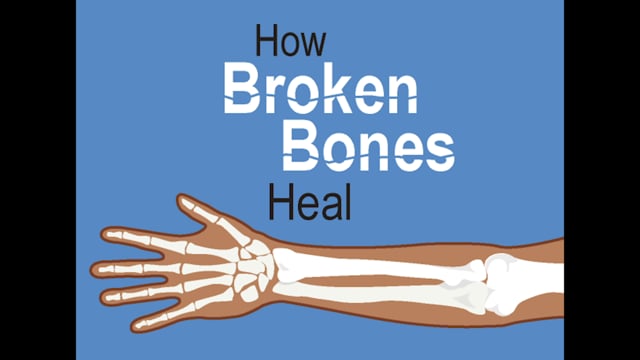Broken Bones
What Is a Broken Bone?
A broken bone, also called a fracture, is when a break goes through part or all of a bone.
How Do Broken Bones Happen?
Most broken bones in kids happen from a fall. An accident or sports also can lead to broken bones.
What Are the Kinds of Broken Bones?
Types of bone fractures include:
- Greenstick fracture: a break on one side of the bone only
- Buckle or torus fracture: an outward bend on one side of the bone without breaking the other side
- Avulsion fracture: when a tendon or ligament pulls off of a tiny piece of bone
- Growth plate fracture: a break in the area of a child or teen's growing bone
- Stress fracture: a tiny crack in the bone
- Comminutedfracture: a bone breaks into more than two pieces
- Compression fracture: a collapsing of the bone
What Are the Signs & Symptoms of a Broken Bone?
The signs of a fracture depend on the type of break and the bone affected. It always hurts to break a bone. There also might be swelling and bruising. The injured area may be hard to move and use.
Sometimes there is a deformity — this means that the body part looks crooked or different than it did before the injury.
How Are Broken Bones Diagnosed?
Doctors order X-rays if they think a bone is broken. An X-ray usually can show if there is a break, where it is, and the type of break.
How Are Broken Bones Treated?
Doctors treat most broken bones with a cast, splint, or brace. This keeps the broken bone from moving while it heals. Even broken bones that don't line up (called displaced) often will heal straight over time.
Sometimes the displaced bones are put back in place before the cast, splint, or brace is put on. This is done through a procedure called a reduction. This is also called "setting the bone."
The two types of reductions are:
- A closed reduction. This is done in the emergency room or operating room, after the child gets medicine to ease the pain. The surgeon moves the bones back into the right position. No incision (cut) is needed.
- An open reduction. This surgery is done for a more complicated injury. It happens in the operating room under general anesthesia. The surgeon makes a cut and moves the bones into the right position. Surgical plates, screws, or wires might keep the bones in place.
How Do Bones Heal?
In the first few days after a fracture, the body forms a blood clot (or hematoma ) around the broken bone. This protects the bone and delivers the cells needed for healing.
Then, an area of healing tissue forms around the broken bone. This is called a callus . It joins the broken bones together. It's soft at first, then gets harder and stronger over the following weeks.
New bone forms in the weeks to months after a break, but full healing can take longer.
-

How Bones Heal
Broken bones have an amazing ability to heal, especially in children. New bone forms within a few weeks of the injury, although full healing can take longer.
How Can I Help My Child?
As your child recovers from a broken bone, make sure that they:
- eat a healthy diet that includes plenty of calcium and vitamin D
- take good care of the cast or splint
- follow the health care provider's directions for rest and/or doing any exercises
- go to all follow-up care visits
What Else Should I Know?
Broken bones are a common part of childhood. With the right treatment, a broken bone usually heals well. Help your child follow the health care provider's recommendations. After a few months, your child will be back to all the activities they did before the injury.


